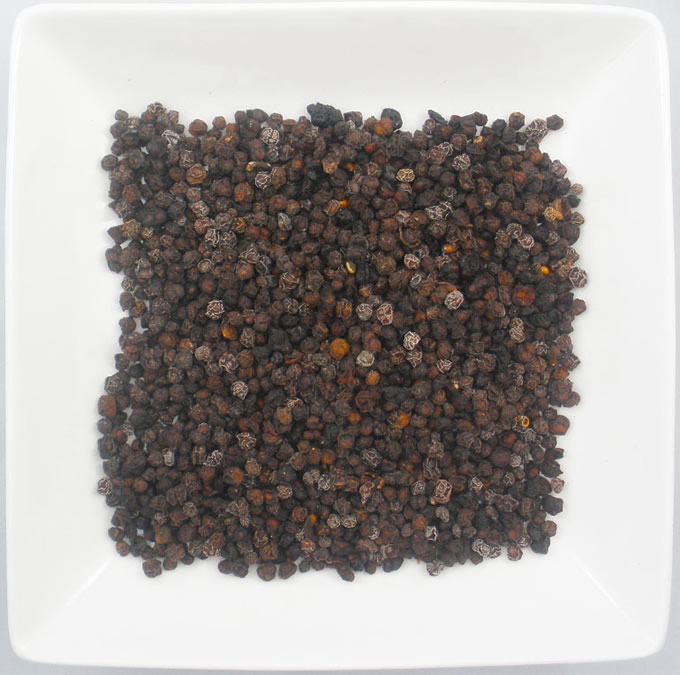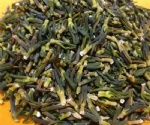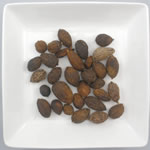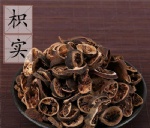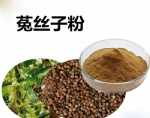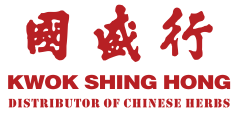
|
KWOK SHING HONG |
|
|||
Products CategoryContact Us
Add: China |
FRUCTUS SCHISANDRAEProduct name : FRUCTUS SCHISANDRAE Item : 79351486093 Details :Schisandra is a medicinal plant, also known as Zanthoxylum bungeanum and black plum. Schisandra is irregular spherical or oblate. 5~8mm in diameter. The surface is red and purple. Schisandra chinensis is naturally distributed in Xiaoxing'an Mountains, Wanda Mountains, Zhangguangcai Mountains, Laoye Mountains and other mountainous areas in Heilongjiang Province. The dried fruit of Schisandra mainly produced in Northeast China, Hebei and other places is commonly called "Northern Schisandra". Fresh Schisandra berries are bright red berries that are juicy, sour and slightly astringent, with a peppery smell. Fresh fruit juice is the raw material for processing natural health drinks; dried fruit is black and purple, wrinkled, and is a traditional Chinese medicinal material. Human vision and hearing can be strengthened; promote bile secretion and antibacterial ability. Schisandra is a commonly used tonic and strong traditional Chinese medicine, which was first recorded in Shennong's Herbal Classic. Listed as top grade. It comes from the dry mature fruit of Magnoliaceae Schisandra or Schisandra sinensis, the former is commonly called "Northern Schisandra", and the latter is commonly called "Southern Schisandra". Both of them were recorded and used with the same medicine from different sources in history. Li Shizhen said: "The five flavors are now divided into north and south. Those produced in the south are red in color, and those produced in the north are black in color. Human nourishing medicine must use the one produced in the north to be good." The Department of Pharmacopoeia of the 2000 edition recorded Schisandra chinensis and Southern Schisandra chinensis as two varieties respectively. Schisandra only refers to the dried mature fruit of Schisandra chinensis, and the specified characteristic component is schisandrol A, and its content shall not be less than 0.4%. Schisandra chinensis refers to the dried and mature fruit of Schisandra chinensis, and the total lignan cord contained in it shall not be less than 3.0%. Due to historical reasons, there are still cases where Schisandra and southern Schisandra are not distinguished. Ripe Schisandra fruit contains about 3% volatile oil, 12% citric acid, 10% malic acid and a small amount of tartaric acid and monosaccharides. The content is the highest during the flowering period from June to July, so the stem bark and fruit have the same active ingredients and have the same multiple uses. Schisandra chinensis is very popular in domestic and foreign markets, with great market potential and high value. It is a promising industry to cultivate schisandra chinensis in forest areas and mountainous areas by using open spaces in forests and large open spaces on both sides of forest edge and rivers. It can be sold fresh, dried and stored, and can be further processed, which is of positive significance to the economic development of mountainous areas. Schisandra chinensis contains 17 kinds of amino acids, including 8 kinds of essential amino acids for human body; organic acids mainly include malic acid, citric acid, a small amount of tartaric acid, succinic acid and oxalic acid; rich in trace elements, such as Ca, K, P, N, Mg etc.; Contains a variety of vitamins, such as vitamin B, vitamin C, vitamin B1, and vitamin B2, of which the content of vitamin C is 21.6mg/l, which is three times that of malic acid. In addition, it contains fatty acids and a small amount of resveratrol. Lignans are the main physiologically active substances of Schisandra chinensis, and have various physiological functions. There are more than 150 kinds of lignans in Schisandra chinensis, mainly schisandrin and similar substances γ-schisandrin, deoxyschisandrin, and schisandrin A , Schizandrin B, etc. Schisandra chinensis has the functions of nourishing qi, nourishing kidney, restraining lung, astringent essence, promoting body fluid, quenching thirst, improving intelligence and calming the nerves, etc. In addition to medicinal purposes, Schisandra chinensis can also be processed into fruit wine and fruit juice drinks. The three northeastern provinces are the main production areas of Schisandra chinensis. The current annual output of wild resources is 500-700 tons, while the annual demand for domestic Chinese medicinal materials market, pharmaceutical companies, brewing and processing enterprises and foreign exports is 3 000-3 500 tons. At the same time as resource protection, large-scale artificial cultivation is the fundamental way to solve the shortage of raw materials. In actual production, mastering the main biological characteristics of Schisandra chinensis is an important basis for implementing scientific and reasonable technical measures, and must be given full attention. Clinical application: Schisandra chinensis has the functions of astringent and astringent, nourishing qi and promoting body fluid, nourishing the kidney and calming the heart. It is used for chronic cough and dyspnea, nocturnal emission, frequent urination, chronic diarrhea, spontaneous sweating, night sweats, thirsty wounds, short Qi and pulse deficiency, and internal heat dissipation Thirst, heart palpitations and insomnia. Schisandra chinensis is an astringent medicine, which has the effect of calming the mind and nerves, but to treat insomnia, it must be combined with other traditional Chinese medicines. In addition, patients with insomnia must be caused by heart and kidney yin deficiency. People with hyperactivity of kidney yang, excessive heat in the lungs, accumulation of phlegm, stop drinking, and rash action of liver fire should not take it. For patients who take western medicine to control sleep, it should be used if possible. Try to avoid taking western medicine to avoid dependence and make the condition worse. Chemical composition: There are many research reports on the chemical composition of Schisandra chinensis, and more than 40 compounds have been isolated. Mainly lignans, including 41 biphenylcyclooctene lignans and 1 2.3-dimethyl-1.4-diaryl butane lignans. 21 biphenylcyclooctene lignans, 1 4-aryltetrahydronaphthalene lignans, 2.3-dimethyl-1.4-diaryl butane lignans were isolated from Schisandra chinensis (the fruit of Schisandra chinensis) 3 lignans, 3 tetrahydrofuranolignans and 10 triterpenes. Nine lignan compounds were isolated from both species, namely epigomisin O, tigloylgomisin P, angelolyl gomisin P, schisantherin A (schisandrin A), schisantherin B (schisandrin B), schisantherin D (schisandra pentyl) , deoxyschizandrin (schisandrin), schisanhenol (schisandrin) and isoschzandrin. Leng Wenquan et al used the HPLC method to identify the two by comparing the characteristic peaks, retention times and peak numbers of the chemical components in Schisandra chinensis and Schisandra chinensis. Zhou Ying et al. determined the contents of 8 main lignans in Schisandra chinensis and Schisandra chinensis from different origins by HPLC method, and concluded that the contents of 8 kinds of lignans in Schisandra chinensis from different origins were very close. The peak shape is very similar, but the content of lignans in different origins of Schisandra chinensis varies greatly. It can be seen that the region has a great influence on the content of active ingredients in Schisandra chinensis, and it is very necessary to control the quality and realize the authenticity of medicinal materials. Barcode: 79351486093 Ingredients: Northern Schisandra Specifications: 16oz (454g) Efficacy: astringent and astringent, nourishing qi and promoting body fluid, tonifying kidney and calming heart. For chronic cough and shortness of breath, nocturnal nocturnal emission, enuresis, frequent urination, chronic diarrhea, spontaneous sweating, thirsty wounds, internal heat and thirst, palpitations and insomnia. Send Inquiry : |
Home
|
About Us
|
Products
|
News
|
Feedback
|
Contact Us
|
SiteMap
Copyright © 2025 KWOK SHING HONG All Rights Reserved
Copyright © 2025 KWOK SHING HONG All Rights Reserved






 KWOK SHING HONG
KWOK SHING HONG  果实籽仁类
果实籽仁类 